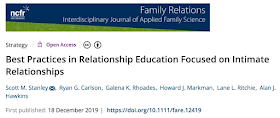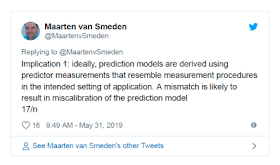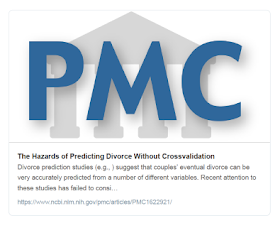My colleagues and I have written a new journal article on best practices in relationship education. You can get a copy of it (free access) from here.
Here are some out-takes from key sections.
Effectiveness of Relationship Education
There are
numerous meta‐analyses of studies examining effectiveness of relationship
education (e.g., Arnold & Beelman, 2019; Carroll &
Doherty, 2003; Hawkins &
Erickson, 2015; Hawkins,
Blanchard, Baldwin, & Fawcett, 2008; Fawcett, Hawkins,
Blanchard, & Carroll, 2010). There has been
evidence of effectiveness on measures of relationship quality, including
communication and relationship satisfaction (.30 < d <.36;
Hawkins et al., 2008). Several studies
have shown positive effects on relationship stability, including less breakup
and divorce (e.g., Moore, Avellar, Patnaik, Covington, & Wu, 2018; Stanley et al., 2014). Other studies
have shown effects on parenting behavior (.10 < d < .16;
Adler‐Baeder et al., 2013; Cowan, Cowan,
Pruett, Pruett, & Wong, 2009; Moore et al., 2018). Additionally,
there is evidence that relationship education is associated with reduced
likelihood of intimate partner violence (IPV; e.g., Antle, Karam, Christensen,
Barbee, & Sar, 2011; Braithwaite & Fincham, 2014; Markman, Renick,
Floyd, Stanley, & Clements, 1993; Moore et al., 2018). This fact was
noted in a report from the U.S. Centers for Disease Control and Prevention
(Niolon et al., 2017).
. . .
Who Benefits Most From Relationship Education?
The evidence
to date is that participants at greater risk tend to demonstrate the most
benefit from relationship education (e.g., Allen, Rhoades, Stanley, Loew, &
Markman, 2012; Bradford,
Adler‐Baeder, et al., 2014a; Carlson et al., 2017; Gubits,
Lowenstein, Harris, Hsueh, 2014; Halford & Bodenmann, 2013; McGill et al., 2016; Williamson et al.,
2015). Indicators of
risk that have been associated with more benefit from relationship education
include higher levels of relationship distress (Carlson et al., 2017; Hawkins & Erickson, 2015; Williamson et al.,
2015); cohabitation
before committing to marriage (Rhoades, Stanley, Markman, & Allen, 2015); infidelity history
(Allen et al., 2012); and
sociodemographic risks, such as family instability, economic disadvantage, and
minority status (e.g., Amato, 2014; Halford, Sanders,
& Behrens, 2001; Stanley et al., 2014). Conversely, there
is evidence that those with especially acute problems (i.e., aggression and
alcohol abuse) may benefit less (Williamson et al., 2015).
. . .
Participant motivations revisited
The findings
from the effectiveness trial including OurRelationship and ePREP
noted earlier highlight an important issue. The effect sizes for the impacts
found for these approaches (so far) have tended to be larger than what is found
in traditional, workshop‐based relationship education provided to disadvantaged
couples. This discrepancy could be due to any number of factors, including the
benefits of online access, the specific approaches used, or differences in
research designs (long‐term RCT vs. shorter term, waitlist control RCT).
However, we believe the primary factor is the difference in motivation (and
relationship quality) of those being served. When participants are distressed
and seeking help, they have a lot of room for gains on measures of relationship
quality compared with couples in more purely preventive applications.
There is a
place for both purely preventive relationship education and relationship
education delivered to couples who are struggling. Understanding who is served,
how they were reached, and why they attend is crucial for understanding
research on relationship education.
. . .
Relationship Education as a Service—and an Opportunity
The room
people find their way into is the room they were able to enter. Whether the
service provided is exactly what is most needed or not, showing up creates
opportunities to make people aware of other services. Because relationship
education carries so little stigma, people who might need other, more stigmatized
services (therapy, substance use treatment, etc.) can enter the relationship
education door more easily than other doors. Thus, it is valuable to provide
information about other services that may be relevant for participants.
Although it is not advisable to assume that specific participants need
additional help when they have not indicated they want help, we do recommend
providing everyone who attends with information about additional resources
available in the community. This strategy can also boost awareness of the
relationship education services among providers providing these other services
in the community. The goal is to leave people with more information than they
had walking in the door. This strategy is strongest if educators demonstrate approachability
so that those needing more help are comfortable asking for it (e.g., Daire,
Carlson, Barden, & Jacobson, 2014).
* * *
Citation: Stanley, S. M., Carlson, R. G., Rhoades, G. K., Markman,
H. J., Ritchie, L. L., & Hawkins, A. J. (2019). Best practices in
relationship education focused on intimate relationships. Family Relations.
Advance Online Publication. https://doi.org/10.1111/fare.12419
Note: This paper is open access under a creative commons license that
allows anyone to quote liberally from the article as long as attribution is
given. Disclosure: I (Scott Stanley) co-own a business that disseminates
relationship education materials and training.



